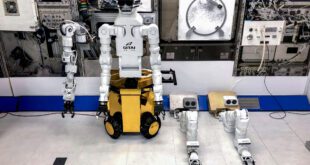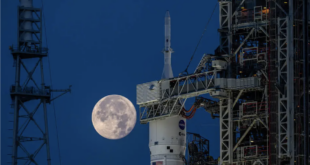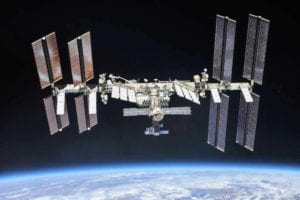
By the end of the next decade, the International Space Station (ISS) will be reaching the limits of its operational life. This beacon in Low Earth Orbit (LEO) has been a constant source of learning and knowledge since its first component was launched in 1998 and its first residents arrived in 2000. As a cooperative effort between NASA, Roscosmos, JAXA, ESA and CSA, the ISS has been pivotal to the development of humanity’s understanding of the space environment. It has allowed a plethora of tests and experiments in biology, physics, astronomy, meteorology, it has increased our knowledge of how to live in space and of the technology that we require to get to our nearest neighbours; the Moon and Mars.
Today, we find ourselves in the midst of a low Earth orbit (LEO) revolution. The commercialisation of LEO is the next big thing and the development of the so-called ‘LEO economy’ is becoming increasingly attractive. How can we use LEO, the ISS and the following platforms, for commercial means? How can we expand our businesses into space? How can earth R&D and business make use of unique space assets such as microgravity? What are the technical challenges? These are questions that will be critical in our push towards the Moon and Mars, but that will also allow us to establish a LEO economy for terrestrial benefit. The ISS provides an ideal incubator for new commercial ventures in space and will enable us to learn, to make mistakes and to further develop our knowledge as we look towards a more sustainable future in the final frontier.
In anticipation of a future LEO economy, NASA and the European Space Agency (ESA) decided to turn to private industry to identify architectures, platforms, facilities and solutions that will meet institutional and commercial needs. NASA’s request for proposals for studies of LEO Commercialisation resulted in awards to Axiom Space, Blue Origin, Boeing, Deloitte, KBRwyle, Lockheed Martin, McKinsey & Company, Nanoracks, Northrop Grumman, Sierra Nevada Corporation and Space Adventures Limited. The ESA request for proposals to study POST-ISS Human Spaceflight Research and Applications Capability in LEO, resulted in awards to Airbus Defence and Space, OHB and Space Applications Services.
The responses to the RFP highlighted a wide range of markets and demand for different applications ranging from satellite fabrication, in orbit manufacturing of pharmaceuticals and 3D bioprinting of organs, transportation services to space tourism.
Independent Belgium-based company, Space Applications Services (SpaceApps) is playing its own vital part in developing the LEO economy with its technology and that of its partners.
ICE Cubes – Facilitating Research for All
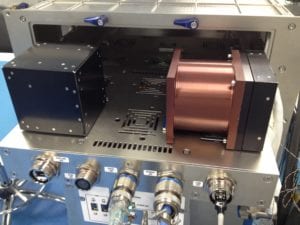
ICE Cubes opens up the research capability of the ISS to the communities that will help to develop the LEO economy by making space part of every-day value chains and business. The ICE Cubes service allows them to use the space environment to conduct their own research and technology demonstrations on the ISS Laboratory.
ICE Cubes provides fast access to space for any researcher, commercial customer, school and university around the world. Both space and now also non-space sectors, both experts as well as new users can innovate by making use of these unique assets of space. ICE Cubes payloads (from as small as 1U) are ideal to conduct scientific experiments, perform R&D in space and pursue in-orbit demonstration and validation of technologies.
This fast-track access through ICE Cubes allows empowering and disruptive innovation for R&D in pharma, biotech, novel materials, food, crop science, regenerative medicine and other highly relevant areas actively benefitting us on Earth from LEO environment assets. The access to a space environment also allows technology companies to validate and demonstrate their technologies, processes and systems and raise related TRL levels before bringing space technologies to their respective market.
SpaceApps’ ICE Cubes Service regularly delivers and returns payloads to the ISS in a fast-track manner. The service allows experimenters to command and receive telemetry in real time from their premises over the Internet.
ICE Cubes has a strategic partnership with ESA and is an accredited implementation partner with the ISS US National Lab that is responsible for operating the U.S. portion of the ISS as one of the national laboratories for use by non-NASA U.S. government agencies, academic institutions, and the private sector.
HOTDOCK – Enabling In-Orbit Servicing & Reconfiguration
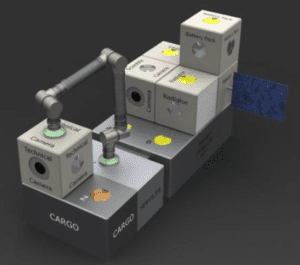
SpaceApps leads the European Commissions MOSAR (Modular Spacecraft Assembly and Reconfiguration) initiative which aims to completely transform spacecraft design by enabling reconfiguration and maintenance.
At present, satellites tend to be highly customised with very little potential for servicing and maintenance in space. The MOSAR initiative allows to cost effectively increase the modularity of space platforms and therefore ease in orbit reconfiguration.
SpaceApps’ HOTDOCK interface has therefore drawn the attention of the space community for the purposes of in-orbit servicing, which will become an essential part of the LEO economy, enabling sustainability of spacecraft and other in-orbit assets.
HOTDOCK is a Standard Interface device for robotic manipulation providing redundant mechanical, power, data and thermal coupling capabilities between payloads and spacecraft or between spacecraft modules. HOTDOCK is an essential building block to support the emerging LEO/GEO robotic servicing market (spacecraft maintenance and reconfiguration, large structures assembly in space). It is also targeted to support the robotic needs of future exploration missions (LOP-G, Moon and Mars surface operations). HOTDOCK has been adopted as the Standard Interface to be used in three major projects of the European Commission’s Space Robotic Program:
- MOSAR – Modular spacecraft assembly and reconfiguration using a walking manipulator – developing, integrating and demonstrating technologies to enable spacecraft on-orbit reconfiguration and maintenance.
- PULSAR – In space assembly of a large telescope mirror – designing and demonstrating technology for on-orbit precision assembly of mirror tiles of a very large space telescope by an autonomous robotic manipulation system.
- PRO-ACT – Planetary RObots Deployed for Assembly and Construction Tasks – developing and demonstrating cooperation and manipulation capabilities between robots for assembly of an in-situ resource utilisation (ISRU) plant.
A batch of 50 units of HOTDOCK will be delivered to these projects in early 2020.
Securing a Future for ISS and Humanity in Space
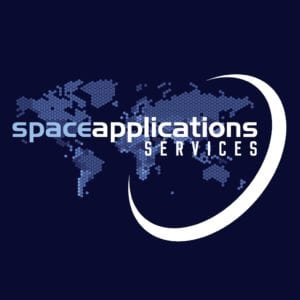 The importance of the ISS is immeasurable to humanity. Over the last two decades, the depth and breadth of learning about space, its challenges and opportunities has helped to advance our knowledge of the space environment to a completely new level. It is critical that the final decade of the ISS’ lifespan is used to its fullest, so that the private sector can now step forward and ascertain the ways in which LEO can enable us to move forward and build upon what we already have for the benefit of Earth and to expand into the final frontier.
The importance of the ISS is immeasurable to humanity. Over the last two decades, the depth and breadth of learning about space, its challenges and opportunities has helped to advance our knowledge of the space environment to a completely new level. It is critical that the final decade of the ISS’ lifespan is used to its fullest, so that the private sector can now step forward and ascertain the ways in which LEO can enable us to move forward and build upon what we already have for the benefit of Earth and to expand into the final frontier.
SpaceApps will be highlighting its HOTDOCK and the ICE Cubes service amongst other technologies at the International Astronautical Congress (IAC) from 21-25 October in Washington DC.


